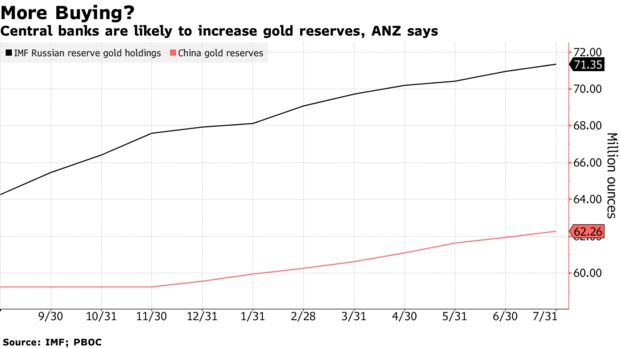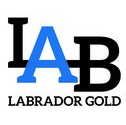Sponsor: Loncor, a Canadian gold explorer controlling over 2,400,000 high grade ounces outside of a Barrick JV. The Ngayu JV property is 200km southwest of the Kibali gold mine, operated by Barrick, which produced 800,000 ounces of gold in 2018. Barrick manages and funds exploration at the Ngayu project until the completion of a pre-feasibility study on any gold discovery meeting their Tier One investment criteria. Newmont $NGT $NEM owns 7.8%, Resolute $RSG owns 27% Click Here for More Info

Maurice Jackson of Proven and Probable speaks to Bob Moriarty of 321gold about his thoughts on the current financial markets and investment opportunity

Excerpt: Maurice Jackson:……Staying in the Southern Hemisphere, let’s visit the Congo, where you just introduced Loncor Resources (TSX:LN). Sir, who is Loncor Resources, and what is the opportunity they present to the market?
Bob Moriarty: Here’s what’s absolutely amazing, I’m glad you brought that up. Loncor Resources approached me, I had never even heard a whisper of the name, I had no clue as to who they were. I went looking into it, they have an incredibly massive land position, in the Democratic Republic of Congo, the DRC.
Barrick Gold has several gold mines there, in the Greenstone Belt, and across the border in Tanzania. Barrick Gold has some of their other really giant mines. Loncor has, in their wholly owned properties, resources of about 2.4 million ounces. They’ve got joint venture with Barrack, on a big piece of their property, like 3000 square kilometers, which is a really big project. Barrick is funding it to feasibility, they’re paying everything. Barrick runs the project, and Barrick spends the money. There are no particular limits on what Barrick can spend, they can spend anything they want to. They’ve got a drill program that’s literally starting right now.
If you look at any stock, you want to figure out what the basement is, what is the lowest price the stock can go to? If you ignored the JV with Barrick, which would be a foolish thing to do, but if you ignored it, you’re buying ounces of gold, in the ground, for $19 an ounce, U.S. So, I don’t think there’s any downside to it. Approximately 70% of shares are in the top three or four shareholders. I think Loncor Resources is a great stock, because if you like gold, and I think after all of the things that I’ve said over the last 15 years, anybody who doesn’t like gold right now is economically illiterate.
Maurice Jackson: You know, you said that lightly, $19 an ounce.
Bob Moriarty: Yeah, yeah. How can you go wrong? At the stage they’re operating, they should be getting $50 or $60 bucks an ounce.
Now, one of the things that we haven’t gotten into, and we need to get into is, one, the T-bond, and, two, what I see happening to gold and gold shares. The T-bond Daily Sentiment Index (DSI), on Friday, hit 98. That is the highest rating I’ve seen, on the Daily Sentiment Indicator for any commodity, ever. Therefore, the T-bond’s going to crash, it’s probably going to take gold with it. Gold had a DSI of 96 a couple of weeks ago.
Everybody hates it. They act like, “Oh my God, you say that gold’s going down. My God, I hate you!” The corrections are perfectly normal, and we’re going to have a correction in gold, and we’re going to have a correction in palladium, and we’re going to have a correction in rhodium. We’re going to go into the biggest financial crash in world history, and most asset classes are going to get sold off. That’s not a bad thing, that creates opportunity, but you’ve got to be flexible, and hopefully liquid.
Now, I am not saying, “Go out and sell everything you’ve got.” Every time I say we’re going to have a correction, “Oh my God, you told me to sell everything.” Well, that’s not what I said, not at all. I said we’re going to have a correction. At the end of the correction, gold and silver and platinum are going to be a lot more valuable. We’re going to do exactly what we did in 2008. A lot of stocks were down 70% or 80%. Most of the big ones, the ones that I like, Lion One Metals, Novo Resources, Irving Resources, Barksdale Capital, these stocks are down 30 or 40% since the first of the year, when I said, “Beware of the stock market.”
I’m not saying something’s going to change on Monday with gold shares, gold shares have been going down for two months.
Maurice Jackson: You referenced Jake Bernstein’s work on the Daily Sentiment Index. What are the parameters that you referenced regarding buy and sell indicators?
Bob Moriarty: The DSI measures sentiment. Most investor look at fundamentals, technicals, worry about the interest rates, worry about the Fed. That’s all bull. People buy stocks because of emotions, and they sell stocks because of emotions. If you can measure those emotions accurately, you’d make a lot of money.
When 98 out of 100 people say something is going to go up, and it doesn’t make any difference what it is, or what the fundamentals are, or what the Fed does, or what the economy does, or what interest rates do, when 98 out of 100 people say something is going to go up, the next move is down. That is the highest number I’ve ever seen. Anything above 90 says the top is near, and anything below 10 says the bottom is near. 98 is such an extreme measure, that I’m perfectly comfortable saying that, you and I are talking on Saturday, and on Monday, T-bonds are going to go down.
Maurice Jackson: Mark the words, there. Which metals have your attention, and why?
Bob Moriarty: Silver and platinum, strange enough, you sent me some information (click here). There was a fire, an explosion at a platinum processing place in South Africa, and the real story is the price of platinum is so far below the cost of production, they’ve got to shut production.
Nobody wants to admit this, everybody’s got their own pet theory, but the fact is supply and demand does work. You cannot have the price of any commodity below the cost of production for very long, or things are going to happen. People are going to shut down production whether it’s wheat, whether it’s gold, or anything else. The silver gold ratio got above 100 to 1, that’s the highest it’s ever been. I think it got up to 102, intraday, a week ago. Silver was very cheap, relative to gold, but that doesn’t mean silver couldn’t correct. I own a lot of silver, and I own a lot of platinum, and a little bit of gold.
SOURCE: https://www.streetwisereports.com/article/2020/03/10/the-fed-the-coronavirus-and-investing.html













